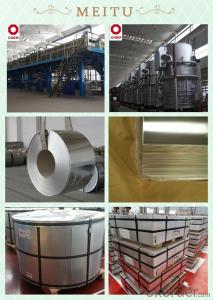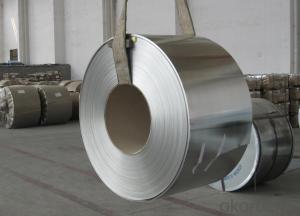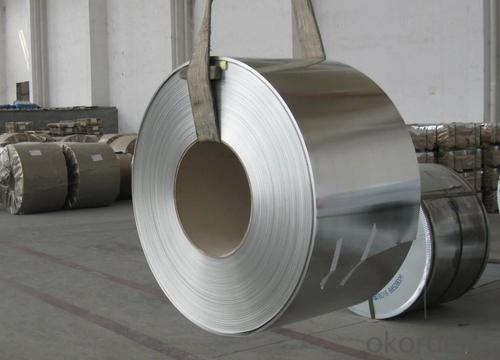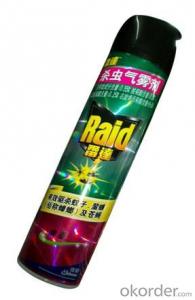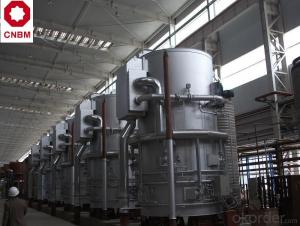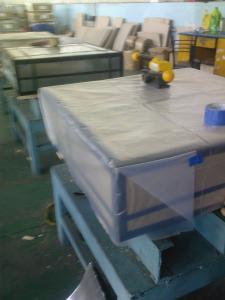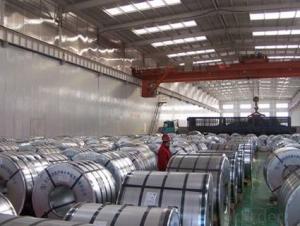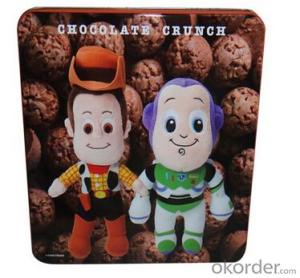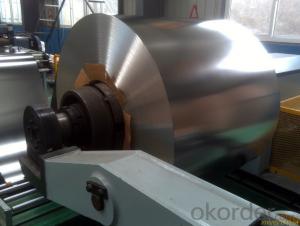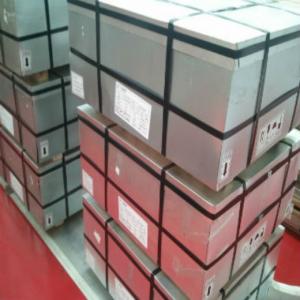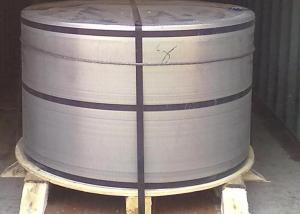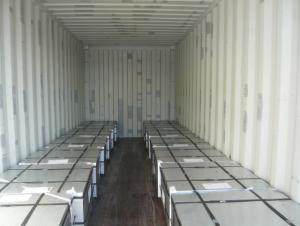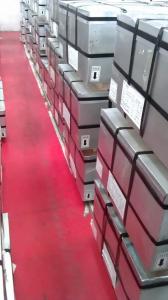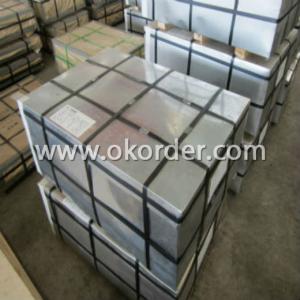Tinplate For Canned Fish Cans, CA, T57 Temper
- Loading Port:
- China main port
- Payment Terms:
- TT OR LC
- Min Order Qty:
- 25 m.t.
- Supply Capability:
- 50000 m.t./month
OKorder Service Pledge
OKorder Financial Service
You Might Also Like
1.Usage
Tinplate is widely used for making all types of containers, containing industrial usage such as paint can, oil can, aerosol cans etc., and food cans like milk powder cans, tomato paste can, dry food cans etc.
2. Quality
As a state owned company and a large tinplate supplier in China, our tinplate quality ranks 1st level in China, similar to Bao Steel, Posco etc.
3. Tinplate Specification
standard: GB/T2520, JIS G3303, DIN EN10202
Material: MR /SPCC
Thickness available: 0.16-0.50MM
Width available: 600~1050MM
Temper grade: T1 – DR8
Tin coating: ordinary 2.8g/2.8g, 5.6g/5.6g and others
Package: sea worthy export package.
Applications: Tin can for chemicals & paint cans, industrial cans, food cans
4.our production equipments

5. Our customers;
now our tinplate has been sold to more than 30 countries, including Europe countries, Gulf Area, South American, South Afric etc.
6. Our overseas markets:
Furthermore, in the year 2014, we have more than 10 overseas warehouses all over the word, located in KSA, UAE, Oman, Russia, Kuwait, Qatar, Oman, Chile, Brazil etc.
7. FAQ
a. what's the annual output?
about 500,000 tons per year.
b. where's the raw matrial from?
our hot rolled coil is purchased from Capital Steel and other state owned mill, with quite good quality.
c. how long is the delivery time?
normally for SPCC about 45~55 days, while 65~75 days for MR material
d. how to control the quality during production process?
inside our workshop, we have MES syestem. It realizes the optimization of the production procedure in the workshop. It could record each step of the whole production procedures, and if some problem appears, factory could easily found and take action, it’s quite helpful to monitor and control the quality.
- Q: What are the main factors influencing the demand for tinplate?
- The main factors influencing the demand for tinplate include the growth of the packaging industry, consumer preferences for canned food and beverages, economic conditions, and government regulations on food safety and packaging standards.
- Q: How is tinplate coated for toys and games?
- Tinplate is commonly coated for toys and games using a process called electroplating, where a thin layer of tin is applied to the surface of the metal. This coating provides a protective barrier against corrosion and enhances the aesthetics of the toys and games.
- Q: What are the different types of tinplate containers available?
- There are several different types of tinplate containers available, including cans, tins, boxes, and drums. These containers can vary in size, shape, and functionality, and are commonly used for packaging food, beverages, chemicals, and other products.
- Q: Can tinplate packaging be used for household products?
- Yes, tinplate packaging can be used for household products. Tinplate has excellent durability, corrosion resistance, and can be easily shaped into various forms. It is commonly used for packaging food, beverages, and other household items such as cleaning products, cosmetics, and personal care items.
- Q: Can tinplate be reused after recycling?
- Yes, tinplate can be reused after recycling. It is a highly recyclable material, and the recycling process involves melting and reshaping it into new tinplate products. This helps in reducing waste and conserving resources.
- Q: What are the common decorative options for tinplate packaging?
- Some common decorative options for tinplate packaging include embossing, lithography, and spot varnishing. Embossing involves creating raised designs on the surface of the tinplate, adding texture and visual interest. Lithography is a printing technique that allows for vibrant colors and intricate designs to be applied to the tinplate. Spot varnishing is a method of selectively applying a glossy finish to certain areas of the packaging, creating a contrasting effect. These decorative options can enhance the overall aesthetic appeal of tinplate packaging and make it more visually appealing to consumers.
- Q: How is tinplate coated for household appliances?
- Tinplate is coated for household appliances through a process called electrolytic tinplating. The tinplate is first cleaned and then immersed in an electrolyte bath containing tin salts. An electric current is passed through the bath, causing tin ions to be deposited onto the surface of the tinplate, creating a thin layer of tin coating. This coating provides corrosion resistance and enhances the aesthetic appeal of the household appliances.
- Q: How does tinplate contribute to the durability of gardening tools?
- Tinplate contributes to the durability of gardening tools by providing a protective coating that prevents rust and corrosion. This helps to extend the lifespan of the tools, making them more resistant to wear and tear caused by exposure to moisture and harsh outdoor conditions.
- Q: How does tinplate contribute to the protection of pharmaceutical products?
- Tinplate contributes to the protection of pharmaceutical products by providing a reliable and durable packaging material. Its corrosion-resistant properties prevent contamination and ensure the integrity and safety of the products. Additionally, tinplate's ability to block out light and oxygen helps to extend the shelf life of pharmaceuticals, maintaining their effectiveness over time.
- Q: What are the common printing methods used on tinplate?
- The common printing methods used on tinplate are lithography, offset printing, and flexography.
Send your message to us
Tinplate For Canned Fish Cans, CA, T57 Temper
- Loading Port:
- China main port
- Payment Terms:
- TT OR LC
- Min Order Qty:
- 25 m.t.
- Supply Capability:
- 50000 m.t./month
OKorder Service Pledge
OKorder Financial Service
Similar products
Hot products
Hot Searches
Related keywords

